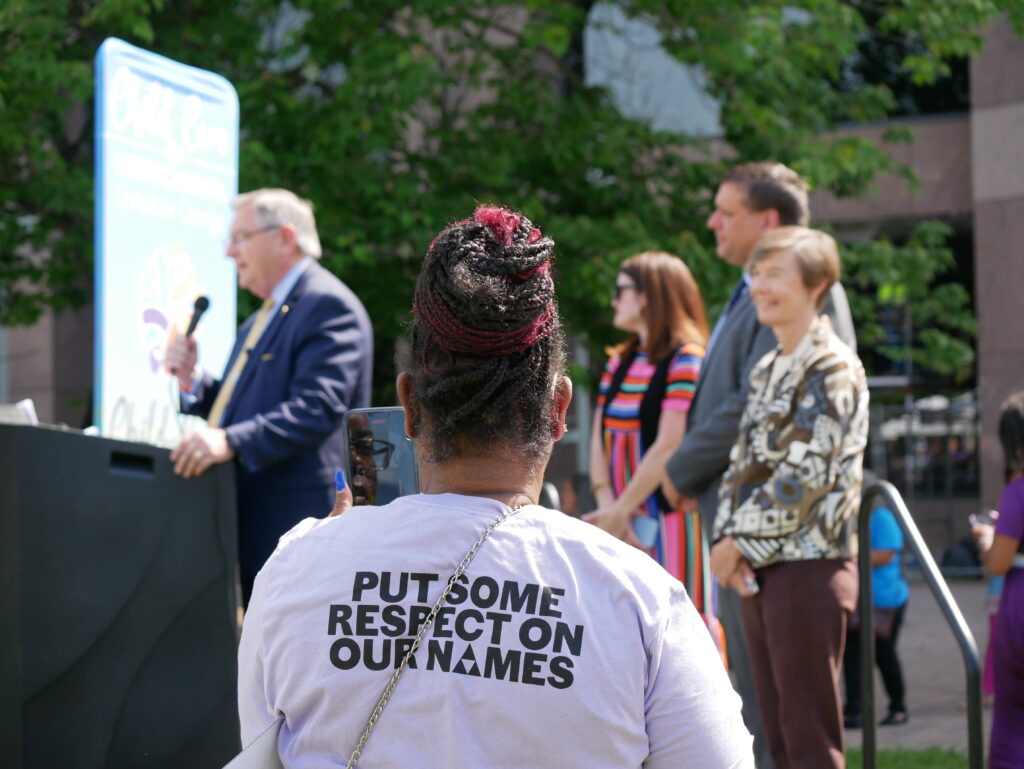Nine of 10 N.C. voters want state investment in child care this year, so where is it?

As EdNC recently reported, a new survey of voters in North Carolina found that a vast majority of them said taking action to ensure that more working families have access to affordable, quality child care should be an important priority for legislators this year.
But that’s not what’s happening in the General Assembly as members work their way through the budget process.
At the beginning of the session, advocates asked for $300 million to continue the pandemic-era stabilization grants that are keeping the state’s early childhood care and education industry afloat. The early childhood caucus requested that amount during the creation of the House and Senate budget proposals. Here’s what those proposals include now:
- Gov. Cooper included $500 million for stabilization grants in his budget request back in March.
- The Senate’s budget proposal included whatever amount is left in a specific fund from the American Rescue Plan Act (ARPA). We’re working to confirm that amount, but it would be less than the fund’s original $215 million.
- The House’s budget proposal did not have any money for stabilization.
So where does that leave our state’s early childhood education system?
My colleague Liz wrote a great article explaining exactly that.
She also wrote about the findings of a nine-month listening tour conducted by Care and Learning (CandL), a coalition of organizations pushing for a more publicly funded system of early care and education. They asked parents and providers what they want from early care and education. Common themes were availability, affordability, and trust.
Those are characteristics that require investment, and as the 2022 NIEER State of Preschool Yearbook revealed this week, North Carolina isn’t sufficiently funding NC Pre-K to meet those goals — and NC Pre-K serves less than one in five 4-years-olds.
But enrollment in NC Pre-K is rebounding and the budget process is only beginning! So stay tuned with us to see what comes next.
Early Bird reads: What we’re writing
New early childhood health initiative recognizes Askewville Pre-K for excellence in physical activity
Askewville Pre-K in Bertie County is one of the first preschools to be recognized for excellence in physical activity by a statewide initiative called REACH. That project focuses on the role that early childhood educators play in helping young children develop healthy habits.
Survey finds nine in 10 North Carolina voters want more state investment in child care this year
The N.C. Chamber Foundation commissioned a survey in April to learn what North Carolinians think about child care across political and geographic boundaries. Nine in 10 voters say taking action to ensure that more working families have access to affordable, quality child care should be an important priority this year.
Here are the early childhood items still in play in this legislative session
Prior to the release of the Senate budget proposal, the early care and education bills that made crossover would rethink how the state would rate licensed child care, allocate additional funds for child care subsidy, and create a pilot that splits the cost of child care among the state government, participating businesses, and their eligible employees.
A 34-county listening tour asked parents and providers: What should child care look like?
Researchers on a nine-month listening tour across 34 North Carolina counties recently asked parents and providers what they need and desire from early care and education. Some common themes arose in the answers: availability, affordability, and trust.
Enrollment in NC Pre-K is rebounding, but per-child spending has decreased
An annual report on state-funded preschool programs has found that NC Pre-K enrollment is on the rise after the COVID-19 pandemic erased a decade of progress. But that increase in enrollment did not correspond to an increase in funding per child when adjusted for inflation.
Your take, for goodness sake: EdNC perspectives
Perspective | Be a 2023 summer learning superhero
Lisa Finaldi of the N.C. Early Childhood Foundation shares a Summer Learning Toolkit to help everyone who works with children support their education during the summer months away from school.
In other early learning news: What I’m reading
‘It takes a village;' Outer Banks Buddies will provide new connections for Hatteras Island’s youth and elderly - From Island Free Press
Alabama doesn’t want early childhood teachers talking about bias. Researchers say they need to - From The Hechinger Report
Lawmakers pass bill to make ‘quantum leap’ in child care investments - From VT Digger
Addressing the Long-Term Effects of the COVID-19 Pandemic on Children and Families - From National Academies of Science, Engineering, and Medicine
Early Childhood Education: Health, Equity, and Economics - From Annual Review of Public Health
Meeting Indigenous Parenting Students' Needs Promotes Equity in Higher Ed - From Child Trends
Research & Resources: Let's talk State of Preschool
NIEER’s 20th edition of their State of Preschool report was released this week, and one thing that stood out to me was this: over the last 20 years, enrollment in state-funded preschool (like NC Pre-K) has more than doubled, as has overall spending on such programs. But! When you divide the total amount spent by the number of children enrolled, it reveals that nationwide per-child spending has remained stagnant for two decades when adjusted for inflation.
That lack of investment is inconsistent with the wishes of voters, parents, and providers in our state.
Things look different in Vermont though.
On May 12, Vermont’s legislature passed a child care bill that is expected to make the state a leader in early childhood care and education. It increases reimbursement rates for child care providers, eliminates co-pays for families earning 175% of the federal poverty level, and extend partial subsidies for families earning up to 575% of the federal poverty level. The measure would be funded by a payroll tax of 0.44% that would be at least 75% paid for by employers.
Vermont’s system has faced many of the same challenges as North Carolina’s — low wages, stagnant investment, pandemic pressures, etc. We’ll be following the developments there closely as Liz and I study what works in other states, and what lessons those states have for North Carolina.



